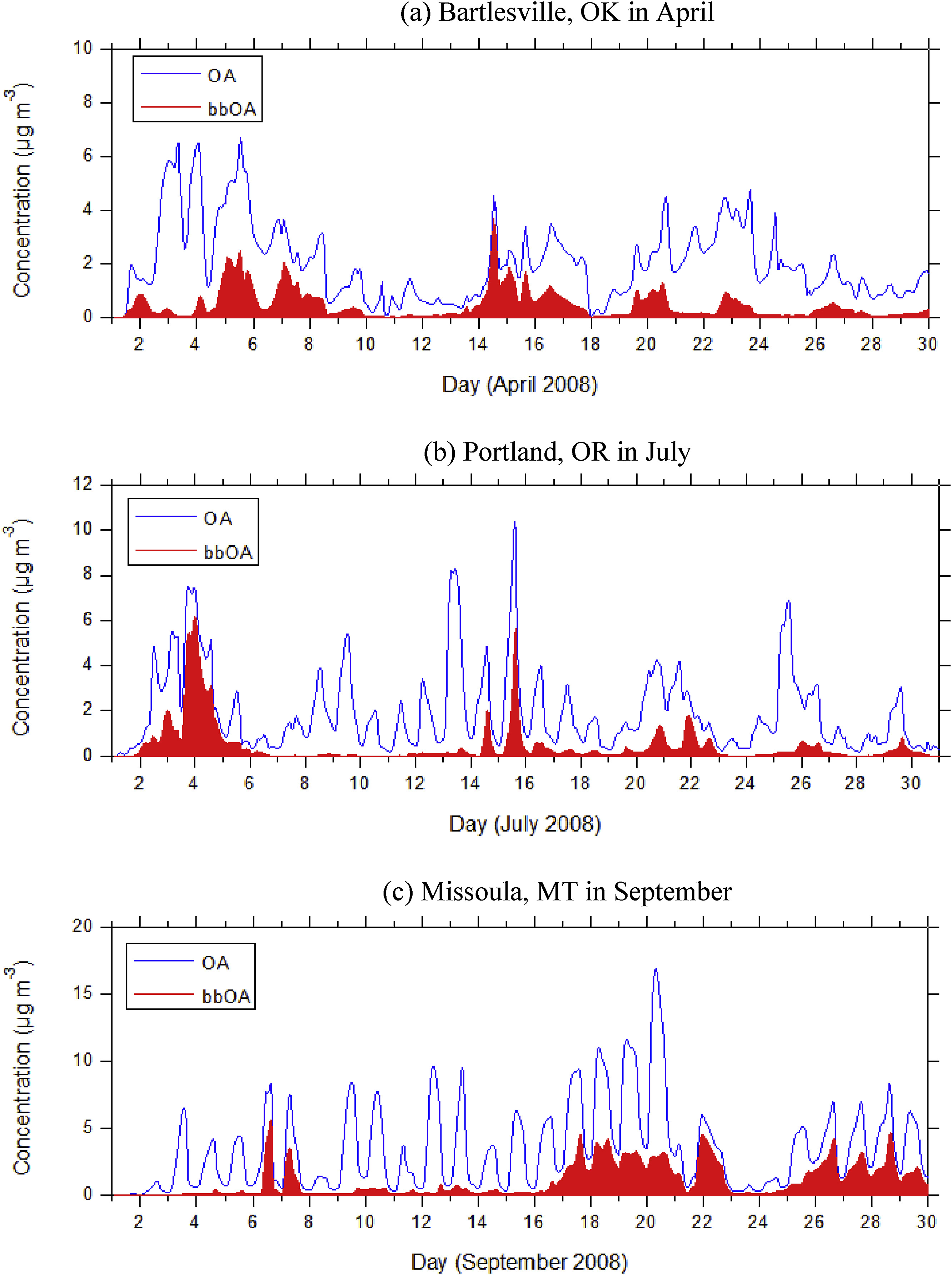Air Sciences principal scientist Matt Mavko is a contributing author on a new article published recently in Atmospheric Environment, with colleagues from the Carnegie Mellon University, Ramboll (formerly ENVIRON), and the Western Regional Air Partnership, examining the contribution of biomass burning organic aerosol (bbOA) to total organic aerosol (OA) concentrations in the continental U.S.

OA is a major contributor to fine particulate matter (PM2.5) concentrations, which is linked to both human health impacts and visibility impairment. OA is composed of thousands of compounds, most of them unknown and with varying volatility, making it difficult to simulate how they age (i.e., transform) once in the atmosphere. Emissions for wildland fires are particularly complex, compounded by the difficulty of measuring emissions directly from the source (unlike a smokestack, measuring pollution emissions at the source of a wildfire is both dangerous and costly).
This is the first in a series of articles to come out of a Joint Fire Science Program (JFSP) grant, “Particulate Matter Deterministic & Empirical Tagging & Assessment of Impacts on Levels” (PMDETAIL), and examines the performance of two chemical transport models as they simulate the atmospheric transformation of fine particulate matter emissions. Air Sciences contributed the fire activity and emissions estimates for the study.
Link to article: https://doi.org/10.1016/j.atmosenv.2018.09.055
